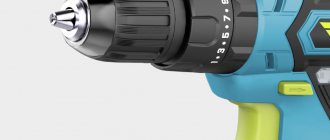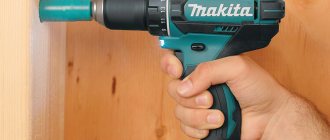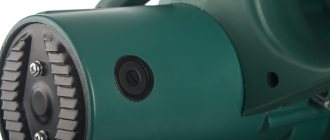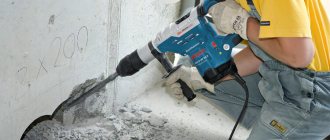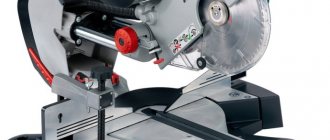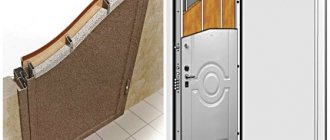Hello everyone, Not long ago I reviewed a very interesting tool: a screwdriver from Worx and used it in the first part of building a “den” for my four-legged friend. This time, an equally (and maybe even more) interesting tool is a pneumatic nailer from Dewalt, model DWFP12231, which also made a big contribution to this project. Please under cat. (great review). A little bit of summer in your timeline 
You can read the first part here. A little about pneumatic nailers: A pneumatic nailer is a tool that, using compressed air pumped by a compressor at the input, allows you to almost instantly drive special nails (nails, “needles”) into wood or other not very hard material, thereby fixing the parts to be connected to each other . Nailers come in different types and purposes, and also differ in the nail supply pattern (and, of course, price): straight, angular, frame (drum), etc. The simplest and cheapest is with a direct needle feeder. The consumables are cut steel strips of different widths, which contain about 100 pieces of these nails. They come in different lengths, square cross-section, and a width of about 1 mm. They look like this:
A similar strip is inserted into the nailer, which in turn is connected to the compressor with a flexible hose...
During operation, the needles are fed automatically (the strip at the bottom of the nailer is pressed by a spring), and the user only has to place the nailer against the workpiece and press the trigger, the compressed air pushes with great force a special striker plate, which “tears off” the upper needle from the “clip” and drives her into a tree. After the “shot”, a new needle is supplied, the firing pin automatically returns to its original position and, within a couple of seconds, a new portion of compressed air is injected. Such “nails” are quite enough for the installation of lining, block house and other wooden cladding materials, as well as for fixing frame structures that are not very loaded. More complex and expensive models use more serious consumption:
For household chores, I chose one of the most inexpensive direct feed models from Dewalt. A LITTLE BACKGROUND...
For some reason, there is an opinion that a pneumatic tool in a home craftsman’s workshop is: - expensive, - bulky, - exotic and very complicated. I will try to dispel this myth, because... I myself became its victim at first. It all started with the construction of a dacha, when the need arose to upholster approximately 200 sq.m. with clapboards individually (that is, practically, as one person). ceiling at a height of 3 to 4.5 meters:
Of all the considered options for how this can be done, in a time frame that does not tend to infinity, with the presence of human power alone, it turned out that the only option is the use of such an exotic device as a pneumatic nailer. At that moment, the tool was completely unfamiliar to me (like all pneumatic equipment, my acquaintance with which was limited to observing the work of impact wrenches in a tire shop during seasonal wheel changes). The Internet produced very encouraging price offers for the instrument itself: the Russian-Chinese Matrix cost about 3000 rubles (~$45), however, as you understand, it also required a source of this very “PNEUMO”, i.e. compressed air under pressure, and in fairly large volumes. And while studying the issue with compressors, I fell into some despondency - they are quite expensive, require regular maintenance (oil-based) and, in general, they are heavy. The Internet is full of detailed information about what types of compressors there are. In short: - piston and screw, 1-2-3 cylinder, with direct and belt drive, oil and oil-free, with and without a receiver. I won’t bore you with the theory, after reading a bunch of articles, reluctantly, I bought an oil compressor with a 24-liter receiver, 1500 W power, for something more than 10,000 rubles. (3 years ago). Weighing about 24 kg. Something like this:
And also this nailer:
And all so equipped, with equipment weighing about 30 kg (let me remind you that it was necessary to cover the CEILINGS at height with clapboard), I went to the dacha, where, fortunately for me, I caught my eye, pushed into the far corner and taken out once a year, an old piston compressor , which I used to pump out residual water from pipes before winter. The compressor was the simplest: oil-free, without a receiver, single-cylinder with a piston on the engine shaft, power 1100 W, discharge pressure: up to 8 atm. But it weighs about 8 kg, is very compact, and even made in Italy (I have no idea how it ended up on the market where I bought it for almost nothing):
Unfortunately, I didn’t save any photos of him in his “early childhood”, but now this dinosaur looks like this:
To wrap up with the preamble, I will say that with the help of this compressor, I completed the entire amount of work, although it took quite a lot of time. Result (this is just one part):
Surprisingly, its resource was enough for the entire volume, and for this review I only used it, although it is becoming more and more difficult for the “old man” to pump large atmospheres and the compression periods are becoming longer and longer. And the new one, big, beautiful and heavy, just sits there collecting dust. Yes, and the Chinese-Russian nailer completed the entire volume, although from time to time, especially at the end of the work, it caused trouble with stuck nails and a blocked striker (although I lubricated it):
Accordingly, as often happens, when a large volume has already been completed, you go to buy yourself a good tool. In this case, I could not pass up the Dewalt DWFP12231 premoneyailer. I really love the tools of this company and the price at the time of purchase was very good, $77.25 (and then I came across even lower ones). Now it's over $90, so you need to catch it. There is also a new model DWFP12233.
I ordered a new one, in a plastic case:
Suitcase parameters:
Inside:
Equipment:
The kit includes only the tool itself, a box of nails and instructions. Handsome:
Another argument why
Dewalt
.
This brand is part of the large Stanley Black & Decker concern, which also includes the Bostich
- a world-recognized leader in the production of pneumatic tools (I was still “licking my lips” at them when I was just planning to sheathe the ceiling - but it was very expensive to buy from us ). When I started looking into it, I realized that Dewalt nailers are the same Bostich, just with a different label and part number, but a little cheaper, and many of the models of these brands are the same.
Tool weight:
Size:
In hand:
Compared to the “old man”:
The only ambush that was that the supplied Devolt fitting is not very compatible with the hoses that are sold here, its diameter is 8mm, while in our country they are sold everywhere, mainly under 10mm. However, the mounting hole is the same as ours, and I twisted it from an old nailer without any problems (they are sold separately in any market and are quite inexpensive):
The flexible hose has a connector that snaps onto the fitting, and the other side is inserted into the compressor using the same fitting:
Assembled:
How does the DeWalt DCN680 nailer work?
The principle of operation of the nailer is based on the accumulation of energy by the flywheel. Rotation of a massive body by an electric motor (in our case, brushless) is a very common drive scheme for a tool of this type. When you press the trigger, the pusher comes into contact with the flywheel, which transfers the accumulated energy to it. And from it to a nail or hairpin. The firing mechanism is returned to its original position by springs. The working cycle is repeated until the clip is empty.
The great thing about this scheme is that to bring the DeWalt nailer into firing position, you only need to spin the flywheel, and this takes very little time. When you press the trigger, the shot fires instantly, without delay.
An interesting feature of the tool is two modes of operation : firing after pressing the head on the part being fixed - a kind of “single”, and firing in “bursts” - when the trigger is pressed, the nails are ejected continuously until they run out.
Nailer and consumables
Complete nails for 1-1/4" (32mm), we don’t have these on sale, I was afraid when purchasing that the nailer would only work with inch sizes. The fears turned out to be in vain, our sizes 16-50mm fit perfectly:
Delivered 30mm:
50mm:
Installing the unit takes a couple of seconds, press the yellow button, the compartment opens, insert the nail plate, tightly close the lid:
By the way, on the cover of the compartment where the needle block is inserted, there are visual instructions on which nails are suitable and what pressure should be set on the compressor:
The “clip” is pressed from below by the cover plate, on which a spring presses and each time, after a “shot”, lifts it up. Let me draw your attention to the fact that the tool is made of magnesium alloy, which makes it very light (about 2 times compared to the “old man”), but durable.
The working element of the nailer in the open and closed state. A very convenient mechanism that allows you to open the top cover to gain access to the channel through which the nail and the striker go; sometimes, it happens that the “needle” is skewed in the channel, the reasons are different: lack of inflated atmospheres, the surface into which the nail is “driven” is too dense, poor quality material for making nails. With one movement, you can release the latch and lift the lid; the lid is fixed in the reverse order:
The spout is a movable spring, the stroke is approximately 2 cm. When working, each time we press it all the way to the parts to be connected:
Neils:
Drummer (in normal position it is completely recessed):
Just an excellent feature of the tool (which was not present on the old Matrix) is the ability to adjust the depth of recessing of the nail head into the material:
This is what it looks like, you can make the cap flush with the surface where the nail is driven in, or drive it deeper, and then “plaster” the hole:
Trigger:
There are rubber shockproof pads on the sides:
Back cover:
Rubberized handle:
Hook for hanging (it’s a pity that it’s not removable):
Another feature of this nailer (or rather, it’s a Bostich feature) is a plastic spring-loaded tip; it is needed for mounting, so to speak, delicate (expensive) elements made of soft materials, and helps prevent wood or, for example, a polyurethane trim element from jamming in place pressing the metal nose of the nailer:
The spare tip is held on a special protrusion of the handle:
Performance and clip capacity
With a fully charged battery, the DeWalt DCN680 nailer is capable of driving 850 nails. Clip capacity 110 pieces per bag. It is an 18 gauge nail gun for finishing nails and studs from 1.56 cm (5/8 inch) to 2.8 cm (2 1/8 inch) in length. To know the moment when the “ammunition” runs out, there is an indicator. It is yellow and is clearly visible.
The supply of nails is blocked after 11 pieces remain in the clip. Compared to other nailers of this type (with a clip), this is too much, in our opinion. Ideally, we would like everything to be shot, literally “down to the hardware.” In this case, blocking seems more logical.
Scope of application of pneumatic nailer
Nailers or electric pneumatic hammers are presented in a number of modifications designed both for driving large-diameter nails (4-5mm and 22cm long) and for finishing with small studs. Since there are no universal models of this type of gun, you should select the standard size of nails used in advance. Most often, they all differ in their purpose in work.
By scope of application they are divided into:
- nailers designed for processing floor coverings - a gun drives specialized nails-crutches at a certain angle. At the same time, modified nailers can also be offered for sale, which are capable of knocking out parquet boards immediately before driving nails;
- guns for roofing work - used when fastening roofing felt, as well as sheets of bituminous shingles;
- sheathing nailers - used for fastening plywood, all types of siding and other sheet materials;
- frame guns - work with large nails ranging in size from 50 to 200 mm and are intended mainly for assembling frames and rough structures;
- finishing pneumatic guns - this type of tool is often used when insulating facades. In addition, installation of baseboards, moldings or casings is carried out using short nails without heads, studs or pins;
- Nailers for direct installation - when working with concrete, steel and brick, as well as when attaching plasterboard sheets.
READ MORE: How Russians differ from Europeans
In general, wherever it is necessary to connect two parts, a pneumatic nailer can be used.
Design features of Dewalt DCN 680
- Type – 18-gauge nailer (nailer) with a vertical clip.
- There is a hook for hanging on the waist belt.
- Installing the clip without using tools.
- Brushless electric motor.
- Adjustment of driving force without using a tool.
- Two LEDs to illuminate the work area.
- Locking after emptying the clip to prevent empty shots.
- If a nail sticks, becomes skewed, or otherwise misfires, the locking lever separates the pusher and flywheel.
- Magazine capacity 110 nails.
- The length of the nails is from 1.56 to 2.8 cm.
- Height – 29.7 cm.
- Length – 25.9 cm.
- Thickness – 9.4 cm.
- Weight without battery – 2 kg 300 grams.
Something useful - additional functions of nail guns
1. Protection against accidental launch, empty or repeated firing.
“Take care of your hand, Senya!”
- the statement of the colorful character of the famous Soviet comedy “The Diamond Arm” will come in handy here. This function not only protects the workpiece from damage, but also saves the operator from injury. Make sure that it is in the tool to eliminate the possibility of “accidents” while working with a cheap tool. 2. Trigger mechanism “single trigger” or “contact trigger”.
The nailer can be operated either by a trigger (one-time release) or by pressing the “nose” (contact release), as, for example, in the N 90 model. It is enough to press the tool against the working surface, holding the trigger in the working position, to hammer the next nail.
It’s worth choosing something that will simplify the work process as much as possible. 3. Adjustment of driving depth.
If there is a need not to drive nails in completely, you can use this function to adjust the pneumatic tool.
4. Impact force adjustment.
This option is rare and is considered a nice addition.
You shouldn’t chase it, because in fact, the function that will increase the cost of the nailer will not provide clear advantages over models without it. 5. The rubberized handle
is not exactly an innovation, but such an improvement significantly affects the ease of use of the tool. The pistol fits securely in the palm of your hand and will not go anywhere even if your hand “shakes.”
We advise you to pay attention to ergonomics no less than functionality. You get to work, you get to hold a gun in your hands, which means you choose the tool completely for yourself.
Features of the Devolt DCN680 model
The impact head of the DCN680 nailer is equipped with a mechanism for automatically eliminating the consequences of misfires; this does not require the use of third-party tools or devices. The driving force and penetration depth of nails can also be adjusted without tools. Two modes of operation - single shots and continuous feeding until the clip is empty. Two LEDs to illuminate the work area.
The model is easy to use and maintain, the quality of driving nails is excellent. We hammered a thousand of them in and didn’t bend a single one.
Bottom line
The nailer is an excellent tool for use in finishing work in the country or at home.
It saves an order of magnitude in effort and time on a large amount of work, allows you to achieve an accurate result, and the pneumatic attachment allows you to buy it for reasonable money (since battery-powered ones are completely inadequate). The pneumatic tool itself is not such a complicated thing; for most jobs, the simplest compressor is enough (which can also be used for, for example, paint and paint work). Naturally, a nailer will not replace a screwdriver and a hammer where load-bearing structures need to be made, but in finishing it is just the thing. Video of work.
Part 1: Part 2: That's all.
Driving depth
The nailer has a seven-position hammering force regulator. The button is large and very convenient to operate; you can do it with your thumb. Setting the desired driving depth did not cause us any difficulties. Among all the devices tested, only DeWalt has this type of adjustment that is the most visual and simple.
Power and performance
We were able to easily drive finishing nails into hard woods such as oak or mahogany. We used nails to install the frame cladding, as well as tongue-and-groove and shaped battens. It was noted that the tip of the DeWalt nailer had quite a lot of play, which impaired driving accuracy; it was lower than that of models from other brands. However, we believe that this drawback will be overcome by the user after acquiring greater skill in handling this tool.
"The Lair of the Wild Beast." The final
For manufacturing, we used to the maximum what was left from the construction site: bars, remnants of lining, etc. I assembled the frame in the first part. The project, as such, was drawn on the knee and was adjusted as the necessary pieces of material were found. The dog’s “residence” is summer, so I didn’t insulate it, I just raised it to the thickness of a block (5 cm) above the ground, and made the floor with plywood. I covered it with clapboard using a nailer:
The rafters, by the way, are also very convenient to connect to the main frame and to each other with 50mm needles, 5 of them side by side, they are held quite firmly, given the small structure of the booth, although in some places, nevertheless, they were reinforced with self-tapping screws:
It turned out like this:
Painted:
And he finished the cut edges with a layout, securing it also with nailer:
The roof was covered with the remnants of corrugated sheeting. Opens:
Result:
The owner looked closely at the dwelling for a long time, but never decided to replace it with a large house in which people live and feed him deliciously:
It comes in periodically, but doesn’t use it all the time. A little later I made a sign in the shape of a bone:
A little later I made a sign in the shape of a bone:
In principle, I am satisfied, because... the booth was no longer conceived as a home for a dog, but rather as an element of country pastoral and design. It turned out, IMHO, not so bad 
As for the nailer, I continue to use it quite often (only now I need to change the compressor). I made canvas frames for my child to paint with oil paints. Enough 4 needles in each corner, hold tightly:
I finished all the doors with homemade wooden frames. IMHO, a nailer is generally the only tool for quickly and accurately installing them yourself. I know that they also take thin finishing nails, insert them into a screwdriver and “twist” them, it turns out the same way, but much longer and more tedious:
